2015-16 Student Soybean Product Innovation Competition
22nd Anniversary of the ISA Sponsored Competition
Here is a listing of all teams and a brief description of their products
TEAM SOY SPACING TECHNOLOGIES
Team Members:
- Ryan DeBusk, Animal Bioscience Senior
-
Taylor Gamble, Agricultural Business Management Senior
Team Advisors:
- Brad Joern, Agronomy
- Phil Reid, Animal Science
The team at Soy Spacing technologies has produced a product line of shipping and construction soybean spacers that mimic the tasks of natural cork and rubber spacers. Our final prototype is 2/3 soybean and can be used in the same applications that natural cork and rubber can.

Our product gives producer a natural alternative to cork spacers that can be made of domestic product. Current natural corks are derived from cork oaks that are grown in more topical regions of the world and then the cores are shipped to the US. Our products are made of natural material, and support the domestic soybean industry. Another key point to our spacers is the price point that allows this product to be made cheaper than the natural cork spacers.
TEAM SOYFOLIATE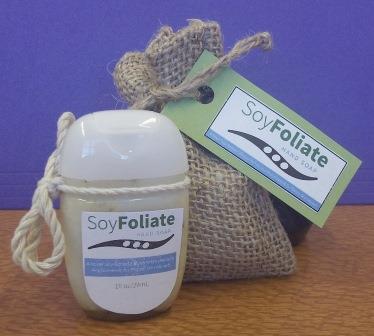
Team Members:
-
Steve Ferris, Pharmacy Senior
-
Sam Lewis, Pharmacy Senior
-
Ryan Pendergast, Mechanical Engineering Junior
-
Alison Switzer, Pharmacy Senior
Team Advisors:
-
Rodolfo Pinal, Industrial & Physical Pharmacy
-
Steven Scott, Pharmacy Practice
Our creation is a soy-based exfoliant product presented in both bar and liquid soaps. Naturally degradable, our novel exfoliating soy beads replace plastic microbeads that are being federally banned in the United States. The current plastic microbeads in commercial consumer products are made of a variety of plastics, the most common being polyethylene, polymethyl methacrylate, nylon, and polypropylene. Simply put, our solution to replacing these governmentally outlawed plastic microbeads is nothing more than the idea of using whole soybeans. By this, the customers who will be losing the products they once loved will have an all-natural alternative that will also provide positive effects for the environment.
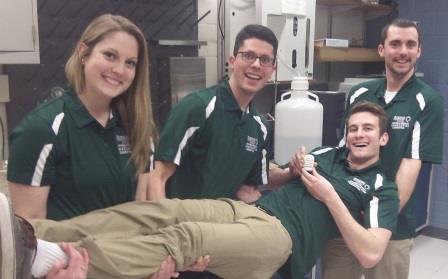
TEAM PERFECT 10 NAILS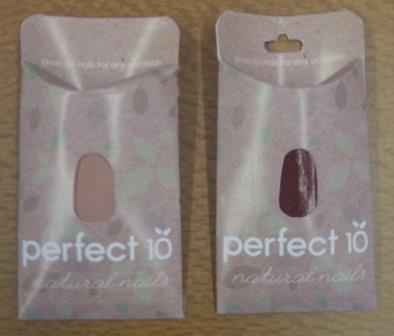
Team Members:
- Alexis Laureano, Biological Engineering Junior
- Megan Morris, Liberal Arts Junior
- Cody Spoolstra, Biological Engineering Junior
- Kimberly Wylin, Biological Engineering Junior
Team Advisors:
- Teresa Cavajal, Agricultural & Biological Engineering
- Amanda Thompson, Purdue Foundry
The product our team developed is artificial nails made out of soy. Artificial nails are used by consumers to provide them with aesthetically pleasing nails for a variety of occasions (Nails Magazine, 2015). This product was originally made from acrylic and other harsh chemicals, which has been causing concern among consumers. Our product contains mostly soy based components making it a more natural and user safe product. The safety of such a product is extremely important since nails are in direct contact with the user’s skin and potentially open wounds. The nails are made by combining soy protein, oil, and glycerin with protein binding agents and a common food and pharmaceutical component, ethylene glycol. A notable 27% of consumers who used artificial nails are concerned about the chemicals inside of them, and even more people do not use the nails entirely for this reason (Nails Magazine, 2015). The developed product, Perfect10 Nails, is meant to provide concerned consumers with a choice that they feel confident making for their environment, health, and beauty.
Perfect10 Nails can be used for many different occasions. Events including weddings, proms, and quinceaneras are typical events where artificial nails are worn. These nails can also be worn on a normal day-to-day basis. Eventually, the product idea could be furthered by being developed into other nail care products, such as the gels that need to be applied by a nail technician in a salon. There is huge potential for soy to be used in cosmetology products as more and more consumers are becoming concerned about the chemical components of the items they use every day.
TEAM SOY QUEENS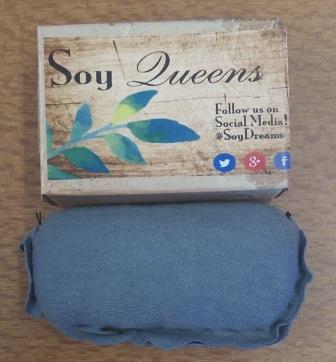
Team Members:
- Emily Coleman, Biological Engineering Sophomore
- Caitlin Link, Animal Science Sophomore
- Madison McGuffey, Agricultural Economics Sophomore
- Emmy Rawson, Biological Engineering Sophomore
Team Advisors:
- Maria Marshall, Agricultural Economics
- David Umulis, Agricultural & Biological Engineering
Soy Queens has created a cushioning material that is intended to be used as a padding in automobile seat. This is a bio based material for the environmentally conscious consumer. It is an environmentally friendly alternative to other products on the market.
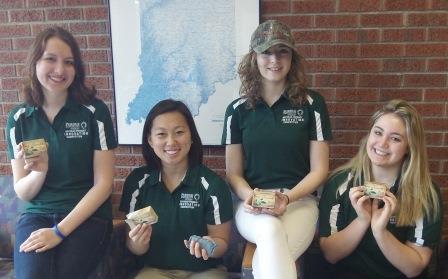
TEAM SOYPODS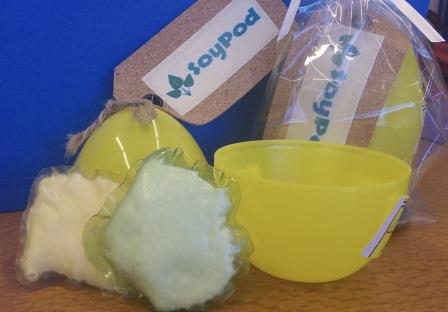
Team Members:
- Andrew Cameron, Chemical Engineering Sophomore
- Harshit Kapoor, Civil Engineering Sophomore
- Xuan Luo, Agricultural & Biological Engineering Sophomore
Team Advisors:
- Kelly Blanchard, Management
- Nate Mosier, Agricultural & Biological Engineering

TEAM SOY PLEASCENT
Team Members:
- Sara Hansen, Chemical Engineering Sophomore
- Colleen Kettner, Mechanical Engineering Sophomore
- Joshua Ostman, Aerospace Engineering Senior
- Grace Winn, English Junior
Team Advisors:
- Michael Harris, Chemical Engineering
- Paul Preckel, Agricultural Economics
Window clings are found in many households. They are used as decorations, to show support for a certain organizations or teams, or even educational purposes. The product, called Soy Pleascent, can fulfill the needs of those looking for a window cling with one added bonus: it has a nice fragrance.
TEAM SO-JA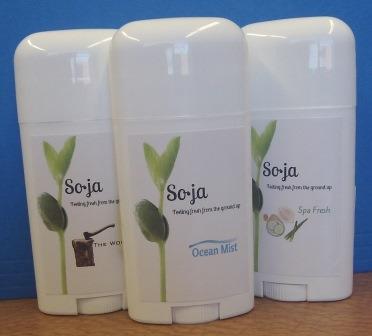
Team Members:
- Jordan Jackson, Biological Engineering Sophomore
- Gytis Kriauciunas, Biological Engineering Sophomore
- Rachel Menhart, Biochemistry Sophomore
- Julia Russo, Biological Engineering Sophomore
Team Advisors:
- Vince Duffy, Industrial Engineering
- Christopher Uyeda, Chemistry
So-ja is a unique and novel, natural deodorant - the first soybean based antiperspirant.
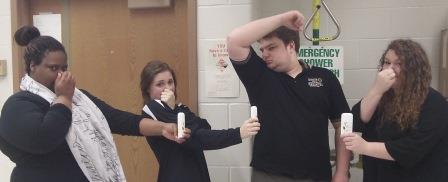
TEAM SPARKED BY SOY
Team Members:
- Evan Anderson, Agricultural Engineering Senior
- Dylan Lowden, Environmental & Health Sciences Senior
- Sara Richert, Public Relations Senior
Team Advisors:
- Vince Bralts, Agricultural & Biological Engineering
- Matthew Ginzel, Entomology
Sparked by Soy is a fire starter paste made mainly from various parts of the soybean plant. Although some additives were necessary in order to ensure that the product be successful enough to compete on the market, the final product is composed of 72.4% soy.
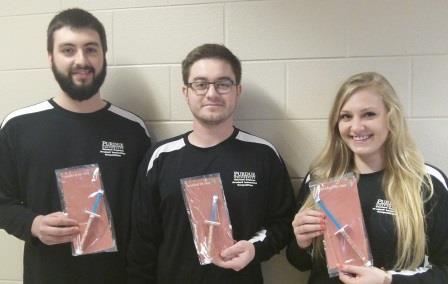
TEAM SOJA SOYA
Team Members:
- Aubree Anton, Biology Senior
- Elizabeth Ziga, Agricultural & Biological Engineering
Team Advisors:
- Beth Carroll, Entrepreneurship
- Abigail Engelberth, Agricultural & Biological Engineering

TEAM SO-YA BABY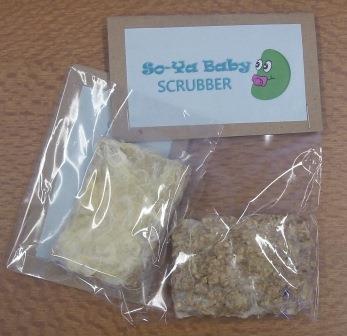
Team Members:
- Andrea Chambers, Biomedical Engineering PhD
- Mark Fanelli, Chemical Engineering Junior
- Orlando Hoilett, Biomedical Engineering PhD
- James Mills, Biomedical Engineering Junior
Team Advisors:
- Brady Kalb, Entrepreneurship
- Shaili Sharma, Biomedical Engineering
The So-Ya Baby Scrubber, is an 80% soy dishwashing scrubber for household dishes, utensils, pots, and pans. There are two sides to the dish scrubber, a soft side to wash and rinse off the dishes, and a coarse side for removing caked on food. The two-sided design provides versatility to our product. Poly-l-lysine is also added to the sponge as an antimicrobial agent (Nishikawa and Ogawa, 2002) to
prevent the buildup of mold and bacteria, a common problem with scrubbers currently on the market (Organic Housekeeping). Presently, there are not many soy sponge products being used for kitchen cleaning or scrubbing purposes on the market.




